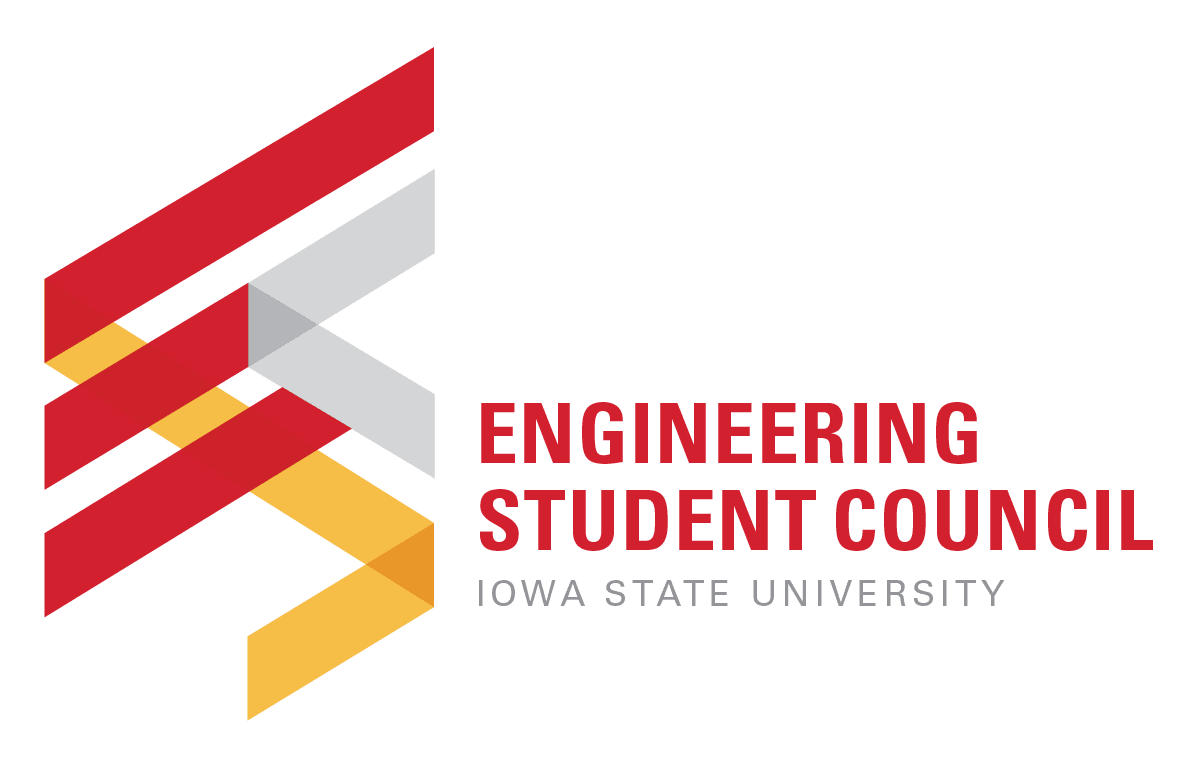Cyclone Rocketry 2024
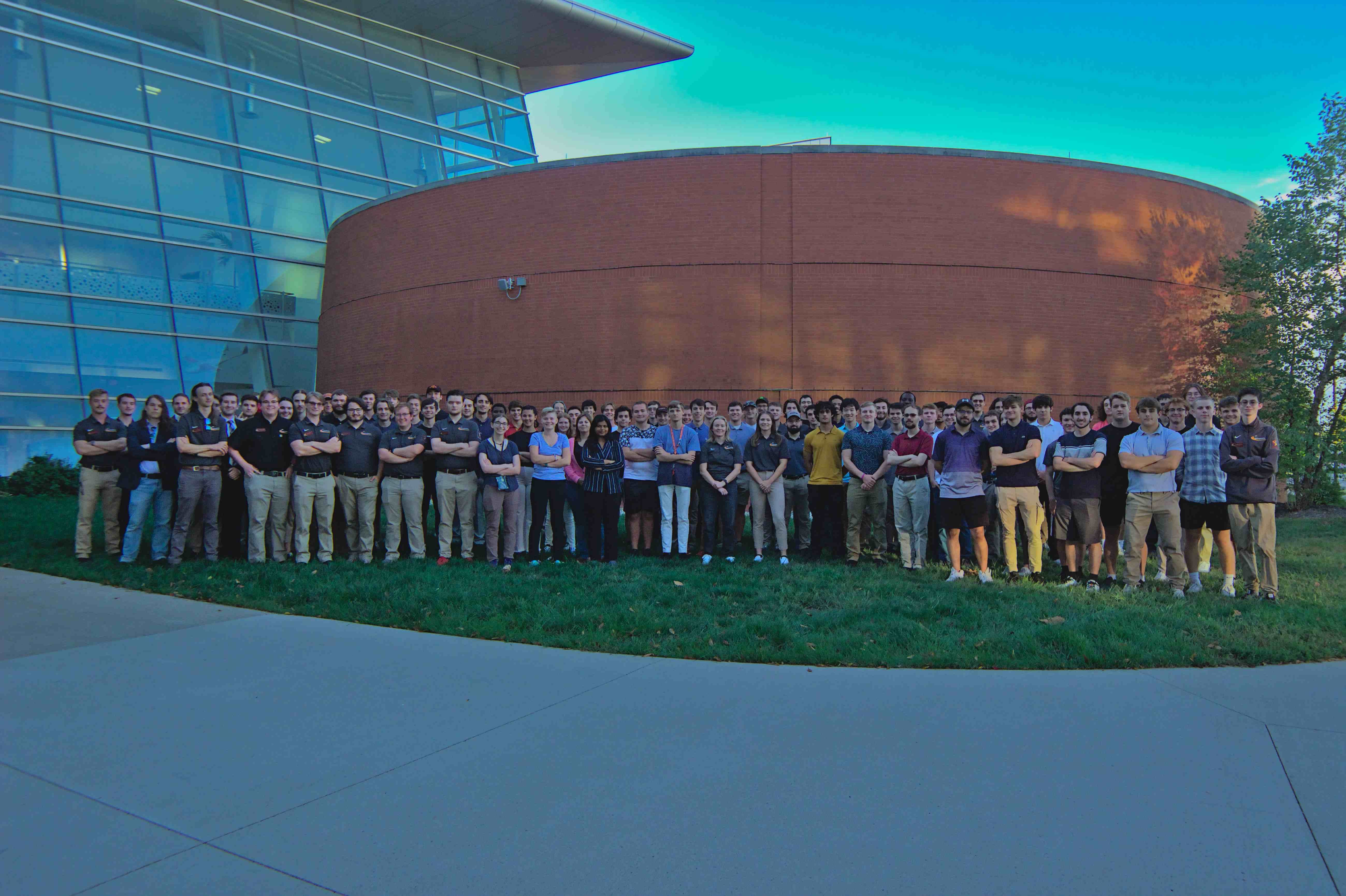
Cyclone Rocketry's 2023-2024 Team
Who We Are
Cyclone Rocketry is Iowa State’s high-powered rocketry team, a multidisciplinary group that competes in the world’s largest intercollegiate rocket engineering competition: The Spaceport America Cup (SAC).
Our mission is to educate, challenge, and inspire Iowa State students, community members, and future generations about rocketry, science, engineering, and space.
Through rocket design, manufacture, testing, and flight, Cyclone Rocketry provides valuable hands-on exposure to rocket engineering, an invaluable opportunity to gain experience outside the classroom in this engineering field. Team members participate in all the key steps of a complete engineering project, providing practical knowledge, fostering leadership development, and building modern communication skills.
Click here to visit our website!
Click here to view our Youtube channel!
History
The team was founded in the fall of 2017 with the goal of competing in SAC 2018. Within our short history, the team has been awarded the Iowa State Newcomer Club of the Year and Outstanding Achievement awards by the university.
Each year, we research, design, manufacture, test, and fly a new competition rocket. Cyclone Rocketry launched Invictus at SAC 2018 and Nova Somnium at SAC 2019. Unfortunately, the competition was canceled in 2020 and 2021 due to the pandemic. However, Cyclone Rocketry competed and flew Ortu Solis in 2020 and Renegade in 2021. 2022 marked the return of Cyclone Rocketry to the Spaceport America Cup with Imperator, which also featured Cyclone Rocketry's first student-developed rocket motor for competition. Last year, Intrepid experienced a shred at roughly 3,000 ft above ground level. Cyclone Rocketry has spent the last year perfecting our systems and will return to the Spaceport America Cup with Vesta!
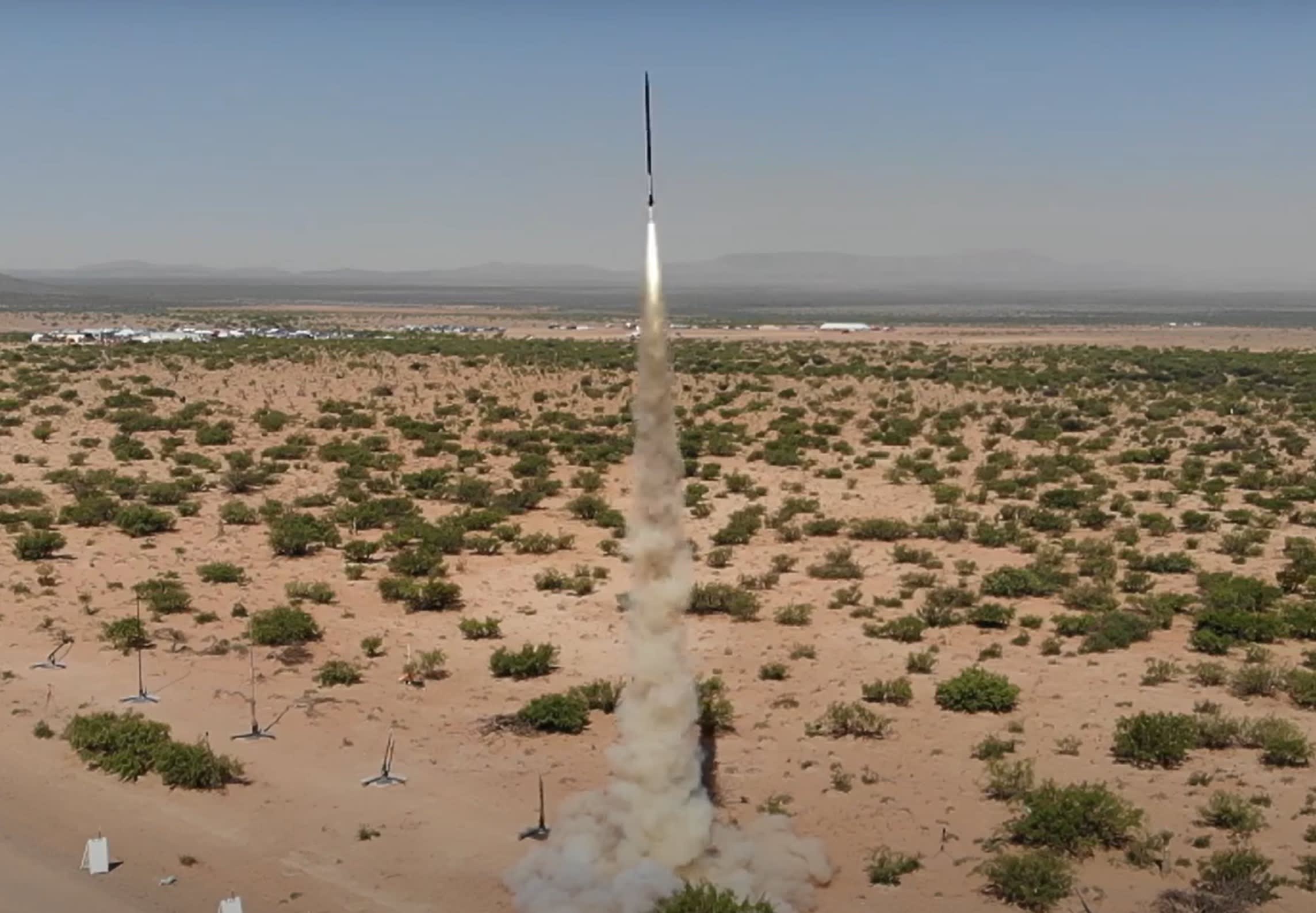
Nova Somnium taking off at the 2019 Spaceport America Cup
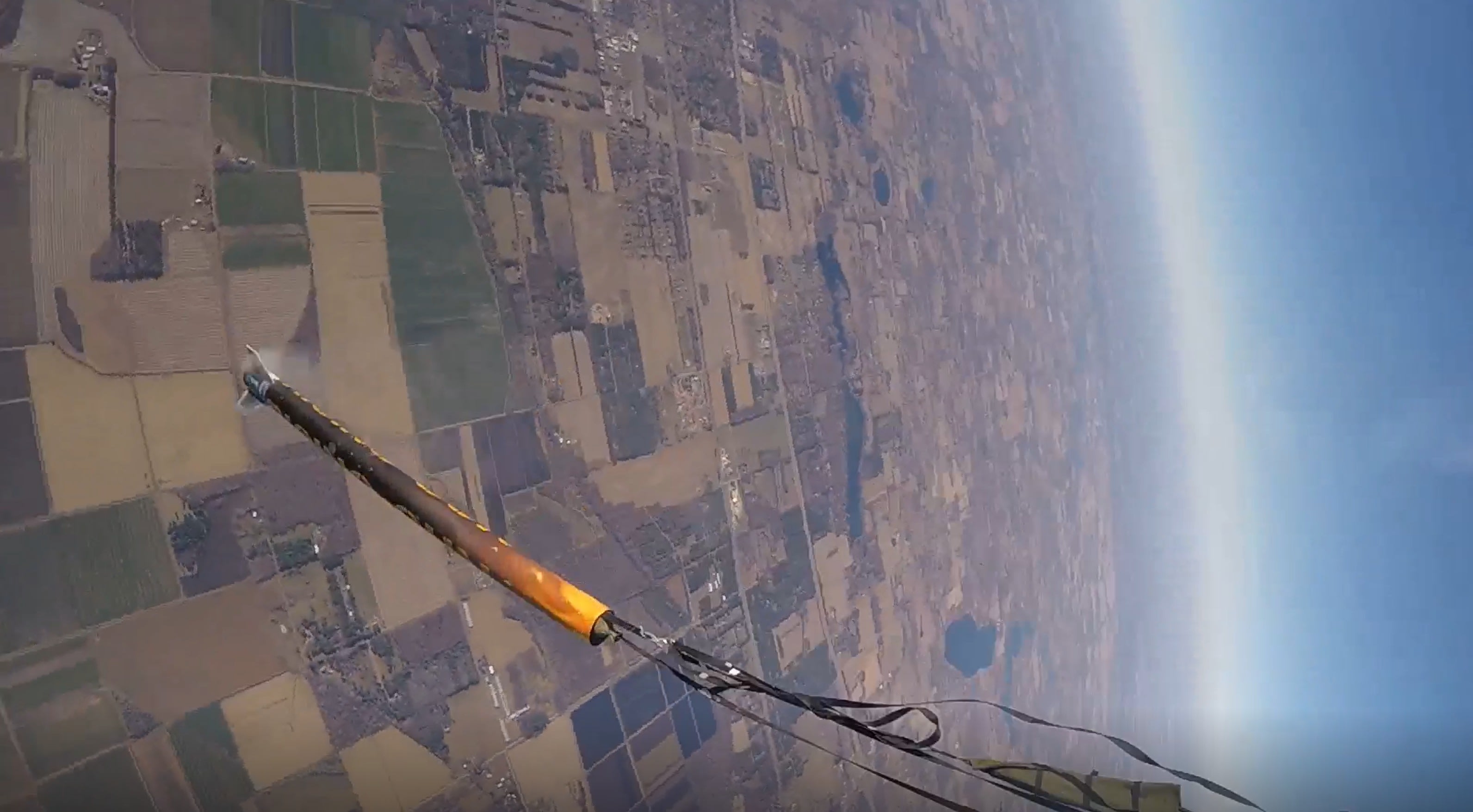
Ortu Solis thousands of feet in the air above North Branch, MN shortly after apogee
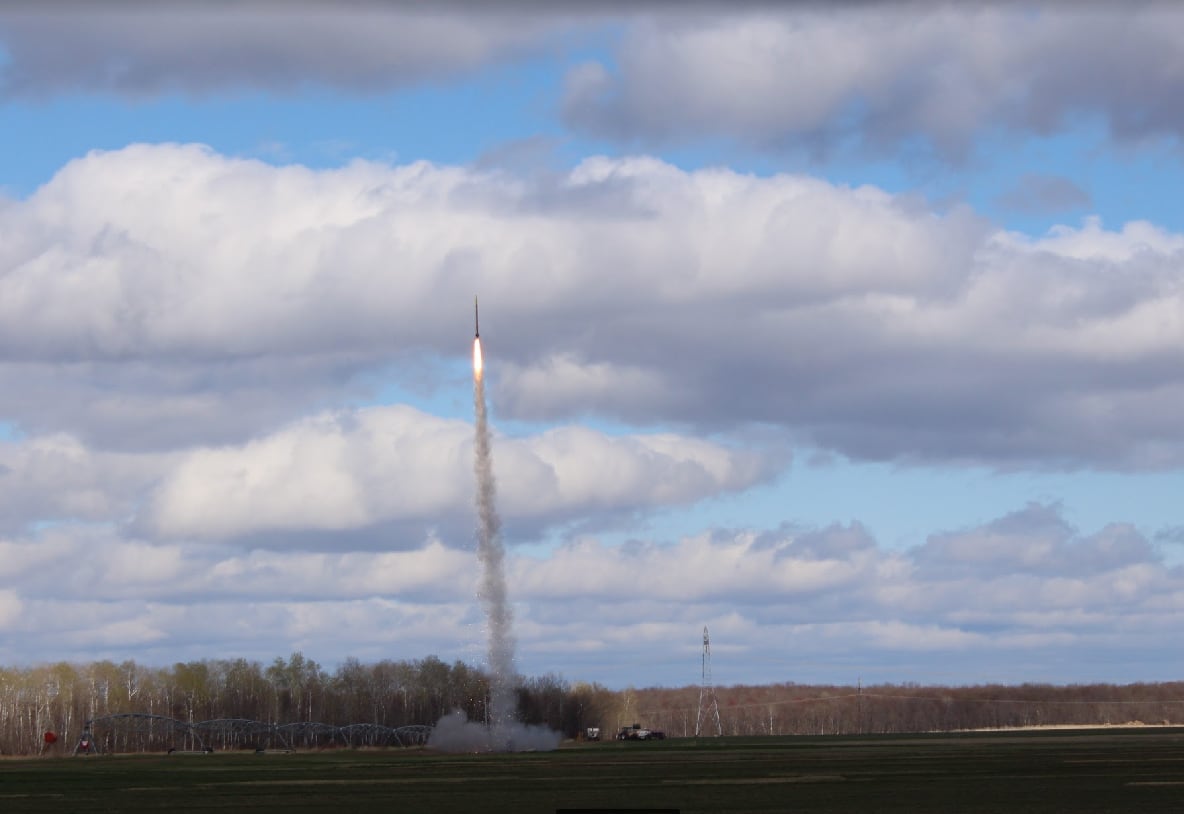 Renegade lifting off at North Branch, MN in 2021
Renegade lifting off at North Branch, MN in 2021
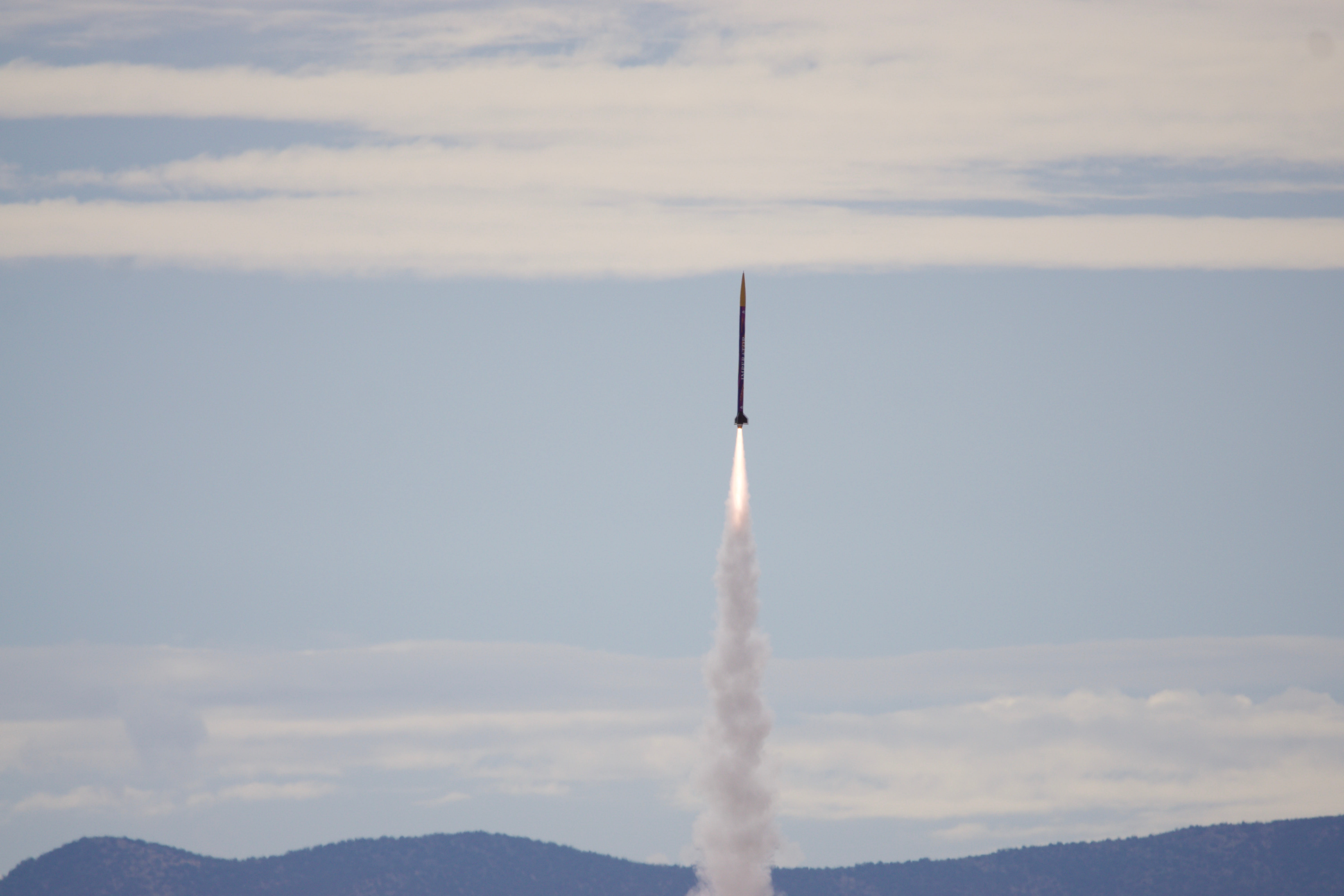
Imperator just after liftoff at the Spaceport America Cup in 2022
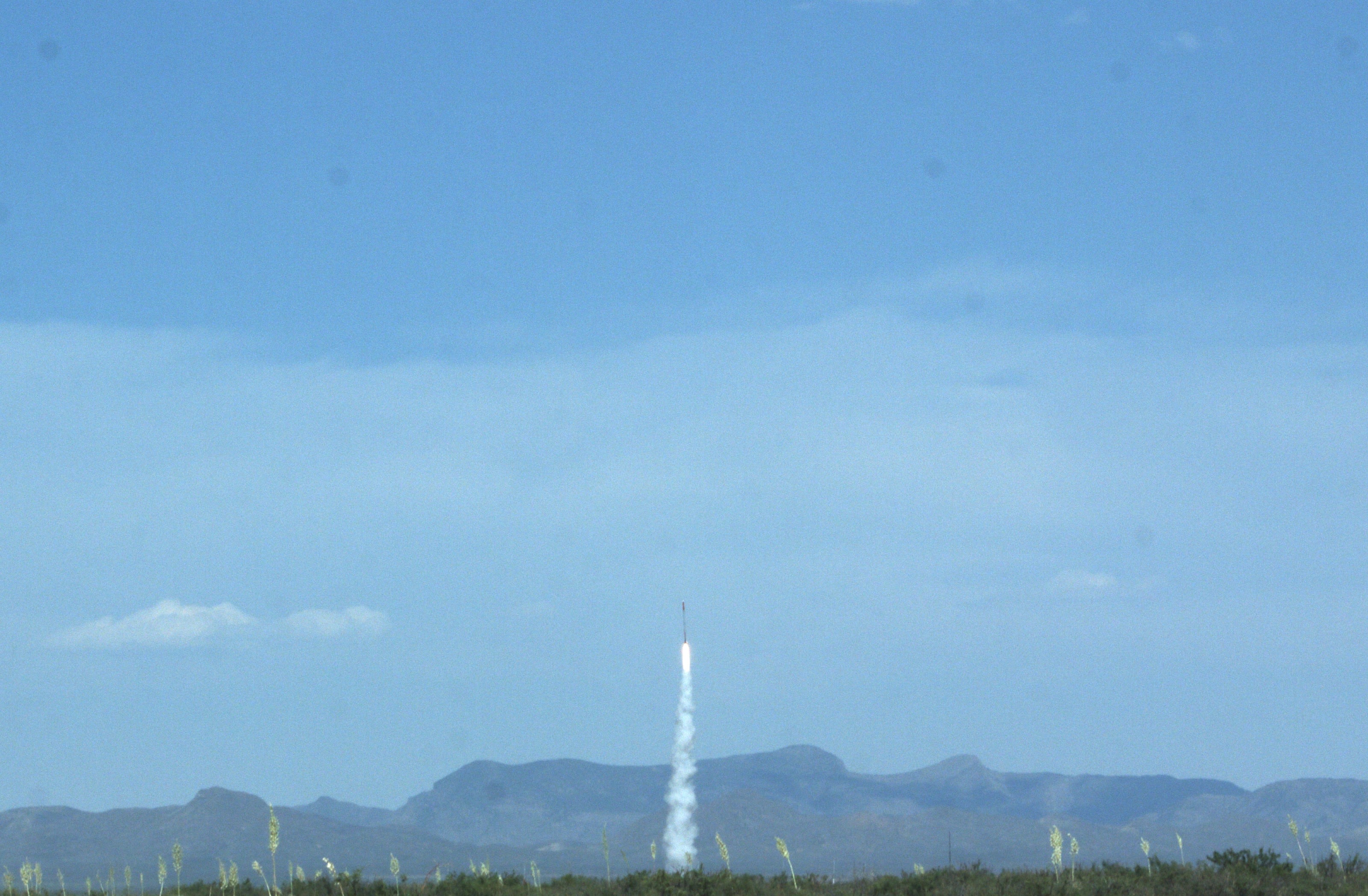
Intrepid after liftoff at Spaceport America Cup in 2023
Vesta
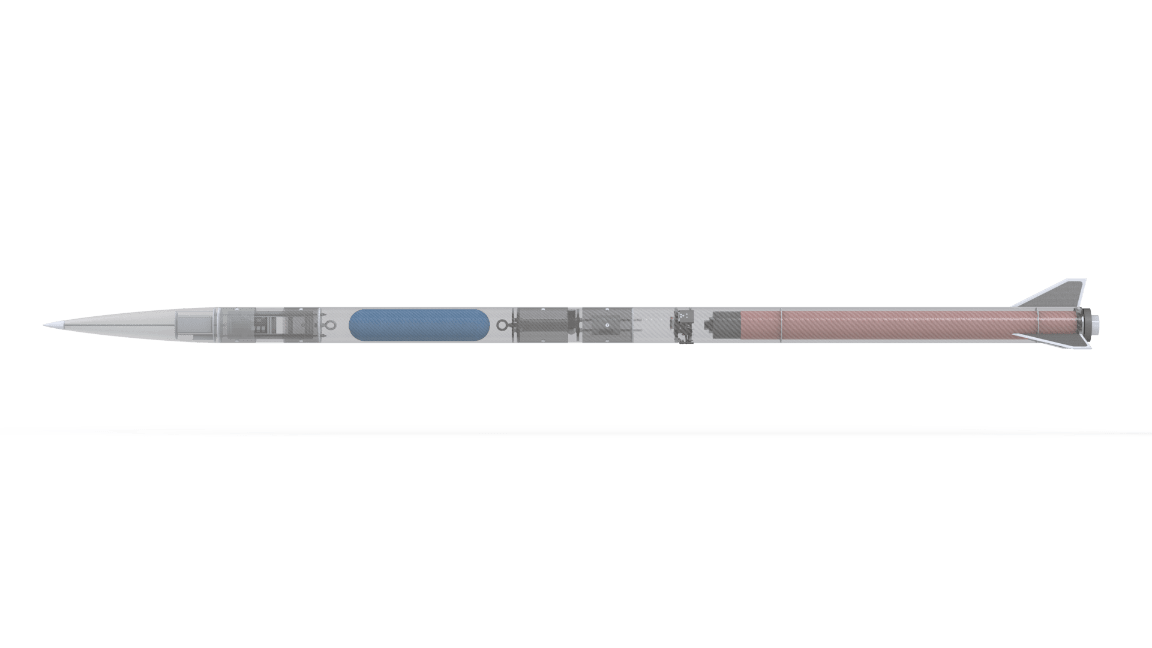
CAD design of Vesta
The mission of Vesta is to fly to an apogee of 30,000 ft above ground level. The scoring at SAC 2024 will largely depend on our altitude accuracy and our ability to successfully recover the vehicle and its club-designed payload. Here are some technical details of this year's competition rocket.
- Height: 12.25'
- Airframe diameter: 5''
- Vehicle weight on the pad: 74 lb
- Maximum acceleration: 25 G
- Maximum velocity: 2082 fps / 1.92 Mach
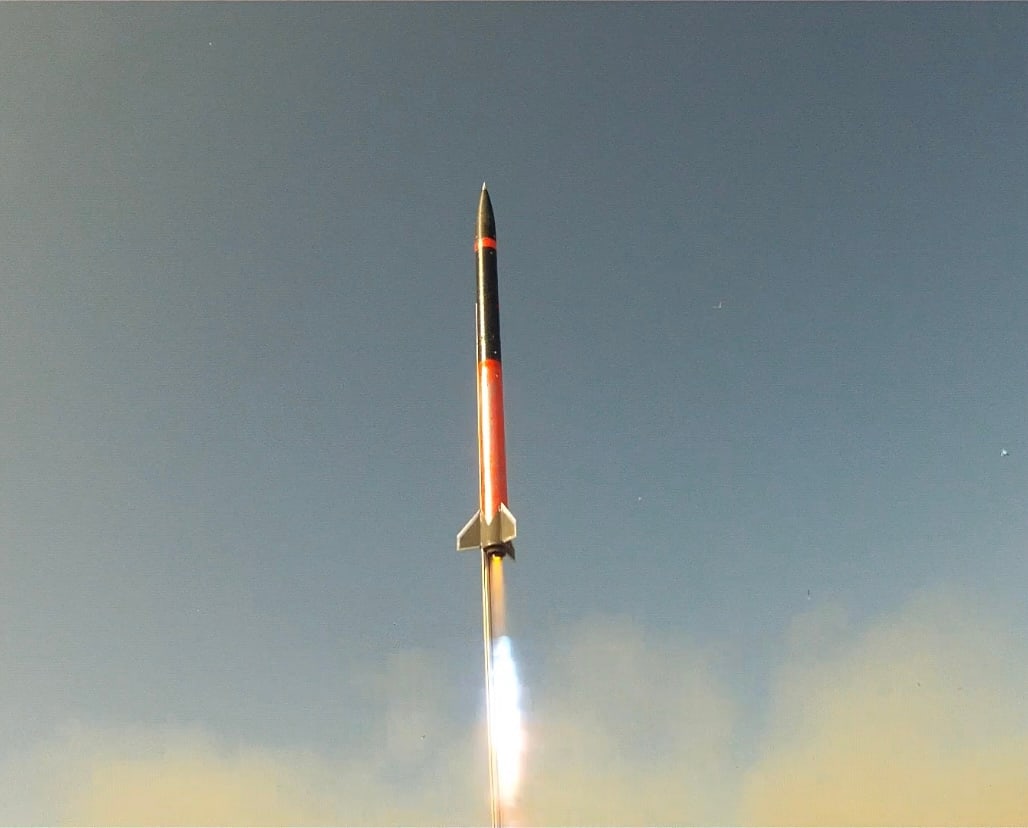
Test Platform launch testing multiple rocket subsystems
Vesta is being built using many Student Researched and Designed (SRAD) technologies. Cyclone Rocketry pursues these technologies because they allow for more custom rocketry hardware and offer our members more design and manufacturing experience.
- Aerostructures The airframe of the rocket consists of body tubes, nosecone, couplers, and fins. All components are made primarily of carbon fiber, with the exception of the fiberglass nosecone. The couplers are produced with a female-mold vacuum bag technique. This year, we are utilizing our X-Winder machine, and vacuum bagging, to produce body tubes and the nose cone with composite filament winding technology. The fins are secured to the body with a tip-to-tip layup.
- Avionics The purpose of our SRAD avionics boards is to control the airbrakes in flight and log flight data. Both the physical boards and the flight software are student-made, and process pressure and acceleration data to determine airbrake actuation. A new GPS system has been added this year that allows increased accuracy for the airbrake calculation. The GPS data will also be sent to the payload, which will transmit the data back to the ground for in-flight telemetry.
- Mechanical Our objective at SAC 2023 is to achieve an apogee of exactly 30,000 ft AGL. To achieve this, our mechanical team designs and manufactures airbrakes that decelerate the rocket during the coast phase of flight. This year, the airbrakes are being scaled-down to fit within the 5-inch airframe. The mechanical team leads the manufacturing of metal parts of the rocket. Along with airbrakes and metals manufacturing, the mechanical team has worked on the development of a piston ejection system which will greatly reduce the needed black powder needed for ejection. The piston ejection system has also been scaled down to 5 inches.
- Payload Each year a cubesat payload is launched with the rocket. This year, the payload will test the survivability of corn saplings within various suspension fluids. Since it is difficult to grow plants in zero gravity environments, sending saplings could be an easier way of extending the duration of spaceflight. However, corn saplings are very fragile, and rarely survive the G forces experienced during a rocket launch. Using suspension fluids, we are hoping to increase the survival rate of these plants. We are also incorporating a radio transmitter, to interface with the data collected by the Avionics team to transmit live telemetry back to the ground.
- Propulsion This year Vesta will be flying on the AeroTech O5500x. This motor provides a total impulse of 21,384 N-sec with a burn time of 4 seconds. This 55.44" long motor will take Vesta to an apogee of 30,000 ft AGL!
- Recovery The parachutes control vertical velocity while the rocket descends. This year, the recovery team is manufacturing an iris, which is an upgrade from the cruciform geometry of previous years. Along with parachute manufacturing, the recovery team has been working on a reefing device which allows one parachute to act as both a drogue and main parachute.
In addition to these team projects, we have expanded our testing capabilities with the construction of a test vehicle which is used throughout the project to test individual systems and components for Vesta.
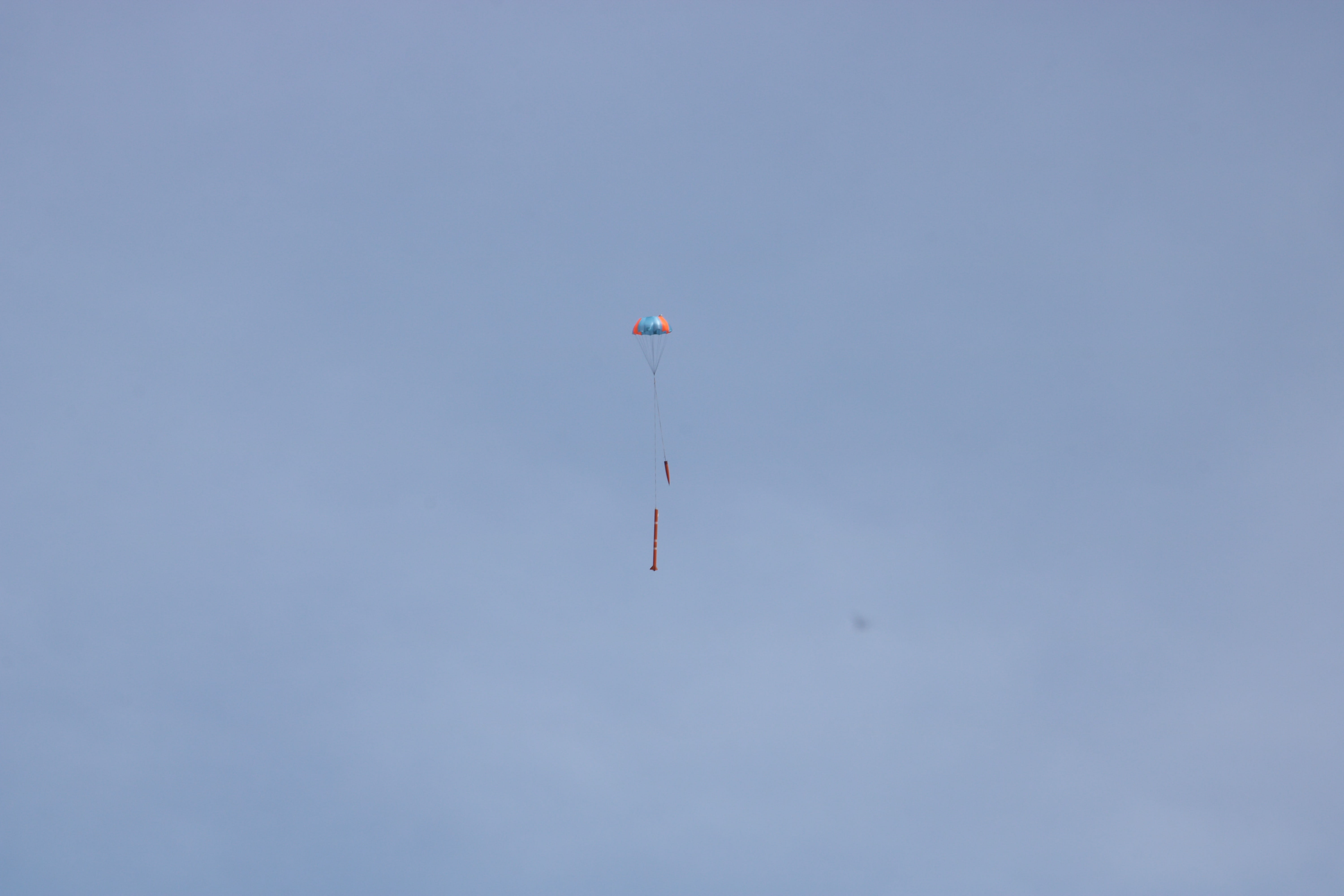
Test vehicle after a successful test of parachute reefing system
Support Cyclone Rocketry
Cyclone Rocketry offers exceptional learning opportunities to its members. We are now in the manufacturing phase of the project, which involves purchasing all components necessary to make Intrepid a reality. We require support from generous donors to achieve our mission. Donations from this fundraiser will also support Cyclone Rocketry's return to Spaceport America Cup, which will be June 19-24th in New Mexico. Please read the benefits associated with the donation levels on the right side of this page. We are extremely grateful for your support!
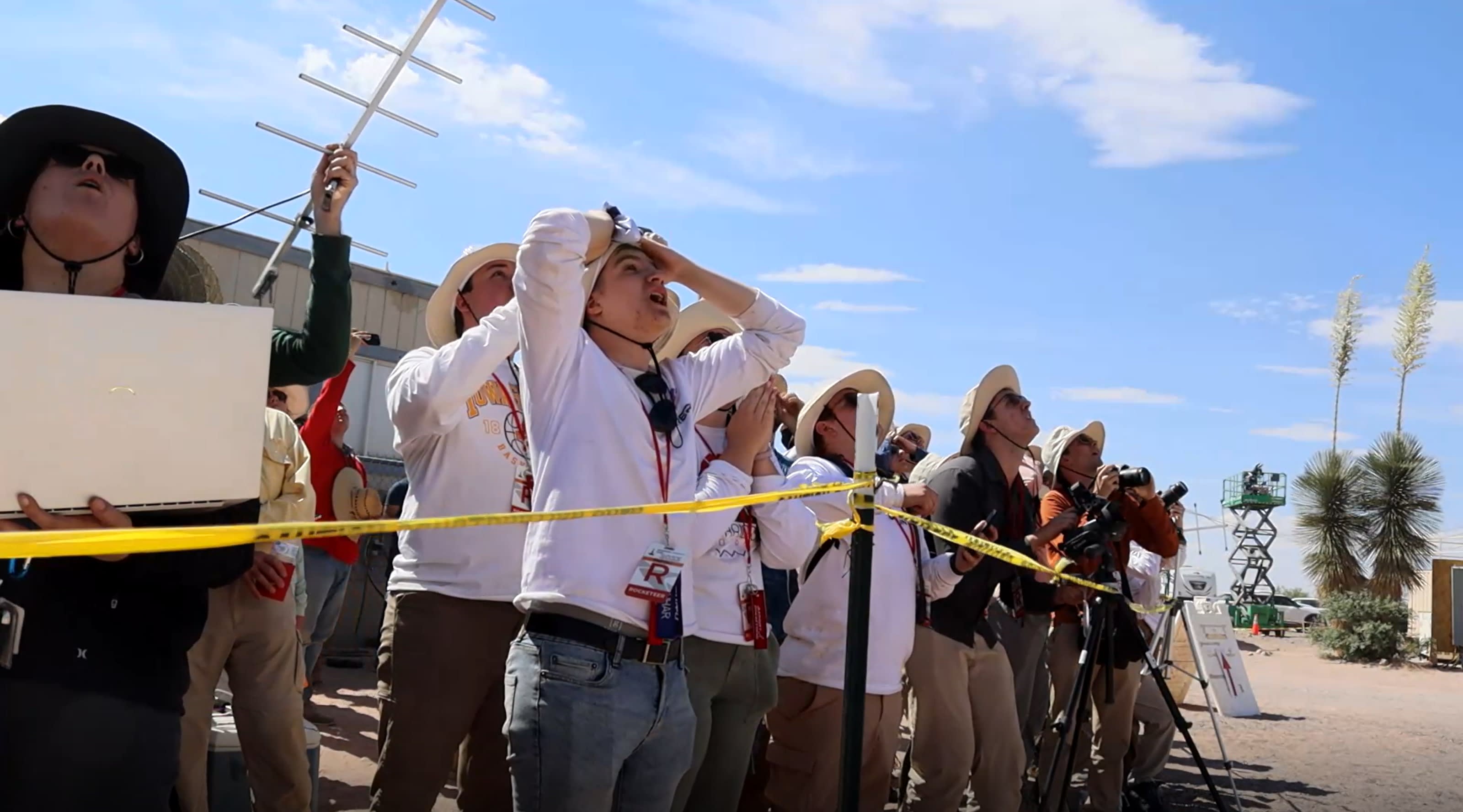
Team members watching Intrepid's launch at the 2022 Spaceport America Cup
Special thanks to Iowa State University's Engineering Student Council for endorsing Rocket Shop’s ability to use the Cyclone™ Rocketry wordmark:
